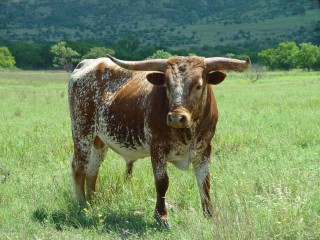 There are various theories to explain why animals come with a wide variety of patterns, colours, stripes and spots, such as for camouflage or to increase their appeal to potential mates.
There are various theories to explain why animals come with a wide variety of patterns, colours, stripes and spots, such as for camouflage or to increase their appeal to potential mates.
Zen Faulkes, an evolutionary biologist at the University of Texan-Pan American, says another idea has been doing the research rounds this year: that spots help to repel flies.
In cows, at least, a mottled coat can trick horseflies into pestering another animal, the associate professor writes on his blogsite.
Earlier this year, scientists published a paper suggesting zebra stripes deterred biting flies.
The same team recently devised a study to test if spots on cows served a similar purpose.
To test the idea, the team set out boards painted with varying amounts of spots, but with the same proportion of black and white.
The boards were covered with glue, so if a fly landed on them, they would be stuck. That allowed the researchers to measure the attractiveness of the surface to flies.
The more smaller spots there were, the fewer flies they found on the board. They also shifted the orientations of the boards, but the results did not change.
The results were also replicated when they covered a realistic model of a cow in glue. Lots of small spots meant fewer flies were captured.
“What is going on here? The team suggest that this all happens because of one important fact about the flies: they lay their eggs in water,” Assoc Prof Faulkes writes.
“How do you get from that to cowhide? Like this:
“Flies lay their eggs in small pools of water, so they need to have reliable ways to detect bodies of water.
“Light reflected off water is polarized, and many insects, including these flies, can see polarized light.
“Thus, the flies have a built-in detection system for, and a preference to move to, polarized objects.
The dark fur of cattle polarizes light more than the white fur. (This is the one point in the study where the researchers used actual cows, not just painted models.)”
Flies are not just an irritation to cattle. Biting flies can seriously affect cattle health and performance, and can transmit disease.
Assoc Prof Faulkes said that besides possible agricultural applications, humans might take a few lessons from this research, since flies that bite cattle can just as easily bite humans.
